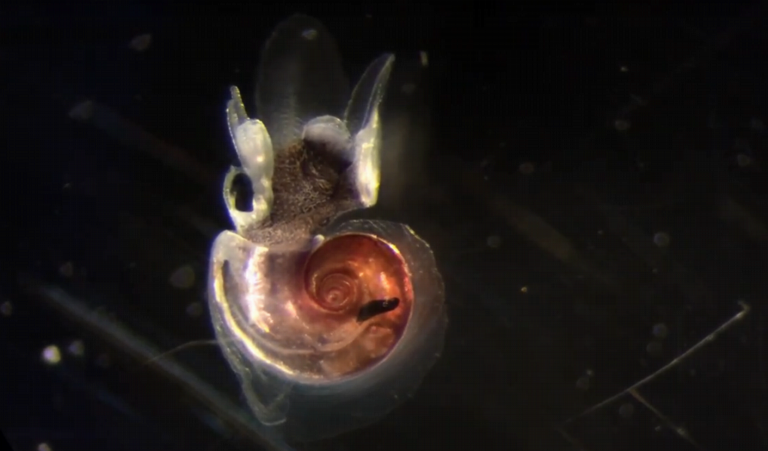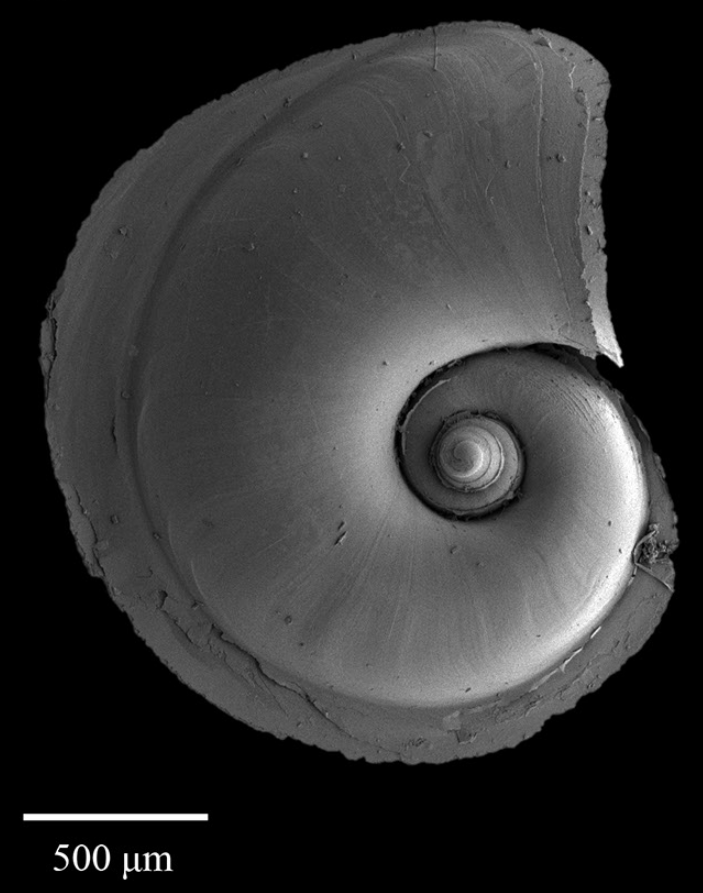
47 years after plankton expert Siebrecht van der Spoel caught a number of sea snail in his net in the South Pacific, the snail he discovered has at long last been declared a new species. Using modern techniques, Naturalis Biodiversit Center biologists were able to distinguish Atlanta vanderspoeli from other holoplanktonic gastropods.
One millimeterin diameter
Siebrecht van der Spoel, now a retired professor, visited the South Pacific in 1972 to research zooplankton, his area of expertise. During the expedition he discovered a sea snail that resembled a known species in the genus Atlanta, but differed enough that Van der Spoel suspected he had found a new species.
The animal he found was brown and pinkish purple, its shell was about a millimetre in diameter. In contrast to most snails, who live their life on the seabed, holoplanktonic gastropods from the Atlantidae family are able to swim freely. They use their flattened shell and fin to move about freely in the water.
Unfortunately, Van der Spoel was unable to collect enough specimens to prove the animal he found was a new species. His snail was recorded as a variation of the known species A. turriculata and Van der Spoel’s specimens were added to the Naturalis collection.
Modern techniques.
Nearly half a century later, Naturalis marine biologists visit the South Pacific again, where they were able to locate the same snail Van der Spoel found all those years ago. Identifying snails from the Atlanta genus requires some expertise. Differences between species are small, and discrepancies within the same species exist as well. To make identifying snail easier, the Shelled Heteropod Identification Portal was created.

By comparing the shape of the shell and the range with other snails from the same genus, and by using modern morphological and DNA techniques, the researchers were able to declare that, after 47 years, the snail was indeed a new species. Debbie Wall-Palmer, who led the research, named it after its original discoverer: Atlanta vanderspoeli.
Van der Spoel was very pleased to have a species named after him: “It is very honorable have an Atlanta named after me. I am very glad my contributions to science are still read and considered an important contribution to the field."
Acidification
Ocean acidification poses a major threat to marine gastropods. With the increased amount of CO2 in the atmosphere, the oceans are turning more acidic, making it difficult for holoplanktonic gastropods to build their shells from aragonite.
If that is also the case with Atlanta vanderspoeli remains to be seen. Previous research by Naturalis scientists recreated the acidic oceans of the future to test whether Atlantidae are able to survive. To be able to know how climate change is affecting life in the oceans, it’s vital to have a clear picture of what species live where and how vulnerable they are to climate change.
Click here to see a short clip of Atlanta vanderspoeli cleaning its shell.